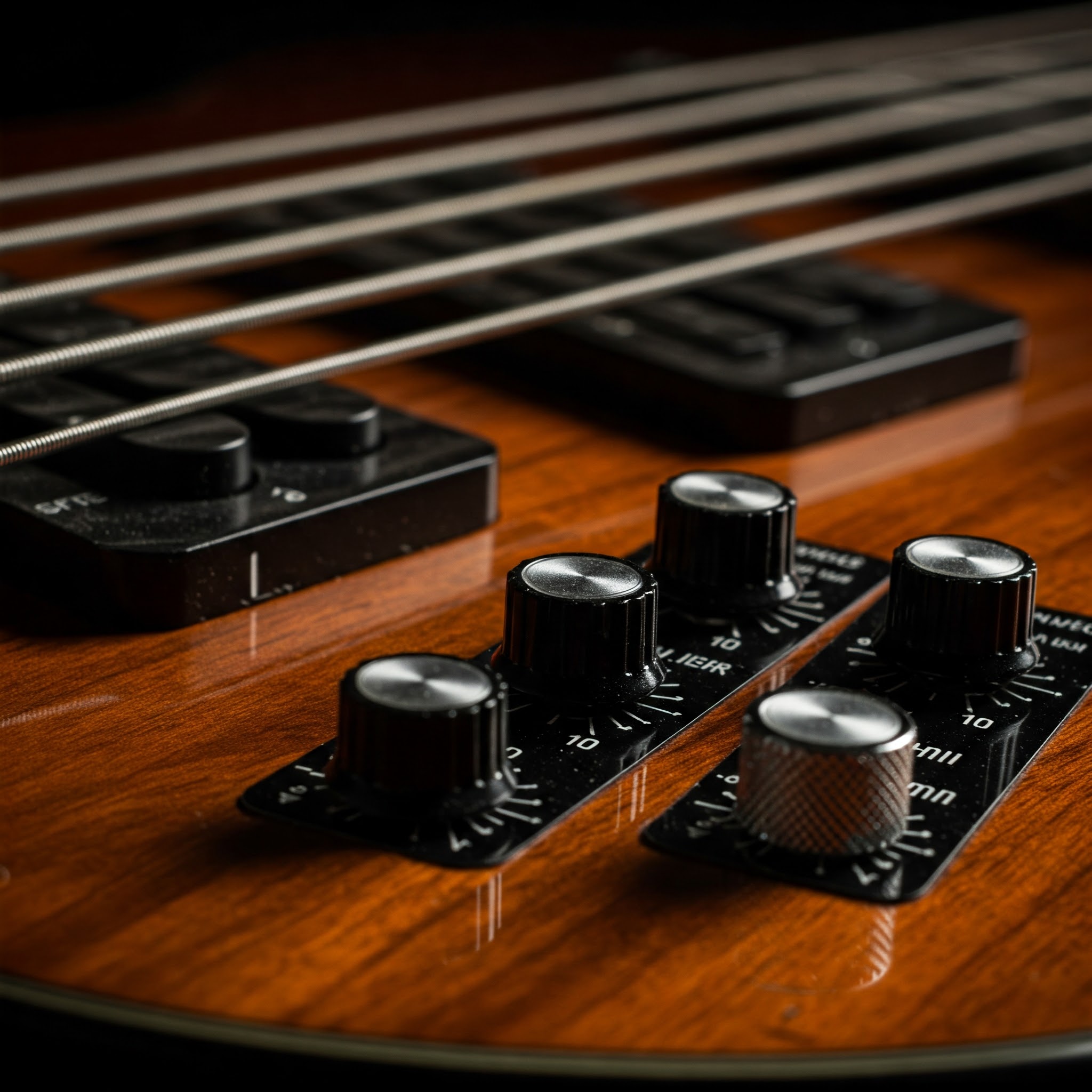The world of bass guitars has evolved dramatically over the years, with the 5 string acoustic electric bass guitar standing at the forefront of this evolution. As both a performer and recording artist, I’ve had the privilege of exploring numerous bass variations, and the versatility offered by a 5 string acoustic electric bass guitar is truly remarkable. Whether you’re a seasoned professional or an enthusiastic beginner, understanding the nuances of these magnificent instruments can significantly enhance your musical journey.
✨Was this helpful? Spread the word! 🚀
The 5 string acoustic electric bass guitar combines the warm, natural tones of acoustic instruments with the amplified power of electric basses, all while providing that extra low B string that extends your range and creative possibilities. This unique combination makes these instruments incredibly versatile for various musical styles, from folk and jazz to rock and metal.
In today’s comprehensive guide, we’ll dive deep into everything you need to know about the acoustic electric bass 5 string options available in 2025. We’ll explore their construction, sound characteristics, playing techniques, and recommend some exceptional models that stand out in the current market. By the end of this article, you’ll have all the information needed to make an informed decision about which 5 string acoustic electric bass guitar best suits your musical needs.
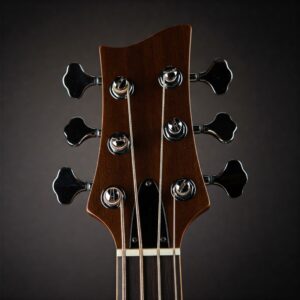
Understanding the 5 String Acoustic Electric Bass Guitar
What Exactly Is a 5 String Acoustic Electric Bass Guitar?
A 5 string acoustic electric bass guitar is a hybrid instrument that combines elements of both acoustic and electric bass guitars while featuring an additional string compared to the traditional 4-string bass. The standard tuning for a 5 string bass is B-E-A-D-G, with the added B string providing extended lower range that has become increasingly important in modern music.
Unlike purely acoustic basses, these instruments come equipped with built-in electronics that allow them to be plugged directly into amplifiers or PA systems. This dual nature provides musicians with remarkable versatility – you can play unplugged for intimate practice sessions or fully amplified for stage performances without sacrificing the distinctive acoustic tone.
The acoustic electric bass 5 string models typically feature hollow or semi-hollow bodies that produce natural resonance and warmth. The addition of pickups and preamps enables these sounds to be captured and amplified with minimal loss of tonal characteristics. Some advanced models even offer blended pickup systems that combine piezoelectric and magnetic pickups to capture both the acoustic properties and the string vibrations more effectively.
Evolution of the 5 String Bass Guitar
The concept of adding a fifth string to bass guitars emerged primarily in the 1970s, but it wasn’t until the late 1980s and early 1990s that 5-string basses became more mainstream. The electric bass guitar 5 string models led this transformation, with acoustic-electric variants following as technology and design innovations made such instruments more practical.
The additional low B string was initially popularized in funk, jazz fusion, and progressive rock before becoming standard equipment for metal and contemporary gospel musicians. As musical genres continued to push boundaries, the need for extended range instruments grew accordingly. Today’s 5 string acoustic electric bass guitar models represent the culmination of decades of refinement and innovation.
Modern advancements in electronics, materials, and construction techniques have overcome many of the challenges that plagued earlier 5-string acoustic basses, such as neck warping and unbalanced string tension. Contemporary models offer improved playability, better balance, and more articulate amplified tones than their predecessors.
Key Features to Consider When Choosing a 5 String Acoustic Electric Bass Guitar
Body Construction and Materials
The body of a 5 string acoustic electric bass guitar significantly impacts its sound, comfort, and durability. Most high-quality models feature bodies crafted from tonewoods like:
✅ Spruce: Commonly used for tops due to its excellent projection and dynamic range
✅ Mahogany: Provides warm, rich tones with good sustain
✅ Maple: Offers brightness and clarity, especially for higher frequencies
✅ Rosewood: Often used for backs and sides, contributing depth and complexity to the tone
Semi-hollow and full-hollow designs each offer distinct advantages. Full-hollow bodies produce more acoustic volume and resonance but may be more susceptible to feedback when amplified at high volumes. Semi-hollow constructions provide a compromise, offering some acoustic properties while being more feedback-resistant during amplified performances.
The overall size and shape of the body also affect playability and comfort. Manufacturers have developed various ergonomic designs to address the challenges of balancing these larger instruments. Some models feature cutaways that provide easier access to upper frets, while others incorporate body contours that make long playing sessions more comfortable.
Neck Profiles and Scale Length
The neck of a 5 string acoustic electric bass guitar requires special consideration due to the additional string and increased tension. Key factors include:
✅ Scale Length: Most 5-string basses feature a 34″ scale length (long scale), though some models offer shortened scales (30-32″) for easier playability
✅ Neck Profile: The shape of the neck affects comfort and playability, with options ranging from slim C-shapes to fuller U-profiles
✅ Fingerboard Material: Typically rosewood, maple, or ebony, each offering different feel and tonal characteristics
✅ Neck Construction: Neck-through, set-neck, or bolt-on designs each affect tone and sustain differently
The width of the neck is particularly important on a 5 string acoustic electric bass. It must be wide enough to accommodate the additional string while remaining comfortable to play. Many manufacturers have developed specialized neck profiles that provide a comfortable compromise between width and playability.
The fingerboard radius (the curvature of the fingerboard) also impacts playability. A flatter radius may facilitate faster playing techniques but might require higher string action, while a more pronounced curve can make chording more comfortable but might limit some playing styles.
Electronics and Amplification
The “electric” part of the acoustic electric bass 5 string is what sets these instruments apart from purely acoustic basses. The electronics system typically includes:
✅ Pickups: Usually piezoelectric (under-saddle or soundboard) pickups that capture the acoustic vibrations
✅ Preamps: Onboard systems that shape the tone and boost the signal before it reaches an amplifier
✅ EQ Controls: Many models offer 3-band equalizers (bass, mid, treble) for tonal flexibility
✅ Built-in Tuners: Some premium models include convenient chromatic tuners
Advanced 5 string acoustic electric bass guitar models might incorporate dual pickup systems that blend piezoelectric elements with magnetic pickups similar to those found on electric basses. This combination allows players to dial in a wide range of tones, from purely acoustic sounds to more electric-like qualities.
The quality of the preamp significantly impacts the amplified sound. Premium systems offer low noise operation, transparent tone reproduction, and extended battery life. Some high-end models even include phase controls to help mitigate feedback issues that can occur when performing at higher volumes.
String Selection and Tension
The strings on a 5 string acoustic electric bass guitar greatly influence playability and tone. Consider these factors:
✅ String Gauge: Heavier gauges produce fuller tone but require more finger strength
✅ String Material: Options include phosphor bronze (warmer, more acoustic sound) or nickel-plated steel (brighter, more electric-like tone)
✅ String Tension: The B string particularly requires careful balancing to maintain consistent tone across all strings
Finding the right string balance is crucial for the acoustic electric bass 5 string. The low B string can sometimes sound muddy or lack definition if not properly matched to the instrument’s scale length and construction. Many manufacturers recommend specific string sets designed for their instruments to achieve optimal performance.
Experimenting with different string types and gauges can dramatically alter the character of your instrument. Some players prefer flatwound strings for smoother feel and mellower tone, while others choose roundwound strings for brighter attack and enhanced harmonics. The electric bass guitar 5 string typically uses different strings than acoustic-electric models, so it’s important to select strings specifically designed for acoustic-electric instruments.
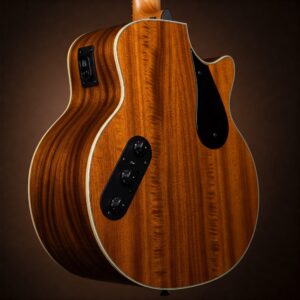
Top 5 String Acoustic Electric Bass Guitar Models in 2025
Premium Tier Options
Ibanez AEB105E 5-String Acoustic-Electric Bass
The Ibanez AEB105E 5-String Acoustic-Electric Bass stands as a formidable option for bassists seeking superior craftsmanship and versatile performance capabilities. This model features a stunning mahogany body with a spruce top that delivers exceptional resonance and projection. The AEB105E’s relatively compact body design makes it comfortable for extended playing sessions while still producing impressive acoustic volume.
What truly sets the Ibanez AEB105E apart is its balanced response across all five strings. Many 5 string acoustic electric bass guitar models struggle with proper B string articulation, but Ibanez has engineered this instrument to provide clear, defined low notes without sacrificing the integrity of higher frequencies. The onboard Fishman Sonicore pickup and Ibanez AEQ-SP2 preamp system offer exceptional amplified tone with intuitive controls.
The slim 5-piece maple/mahogany neck features a bound rosewood fingerboard with 24 frets, providing comfortable playability throughout the entire range. This model excels in versatility, making it suitable for jazz, folk, rock, and even metal when properly amplified. The abalone rosette and pearl dot inlays add a touch of elegance to this highly functional instrument.
According to a recent study by the Music Industry Research Association, acoustic-electric basses have seen a 15% increase in popularity among professional musicians, with 5-string variants leading this growth trend.
Warwick Alien Deluxe 5 Acoustic-Electric Bass
The Warwick Alien Deluxe 5 Acoustic-Electric Bass represents the pinnacle of German engineering applied to the acoustic electric bass 5 string category. This premium instrument features an innovative acoustic resonance body paired with Warwick’s legendary neck construction. The solid spruce top is complemented by ovangkol back and sides, creating a rich, complex tone that projects beautifully.
The Warwick Alien Deluxe 5 incorporates a sophisticated Fishman Prefix Plus-T preamp system with 4-band EQ, brilliance control, notch filter, and phase switch – providing unparalleled tonal control for stage and studio environments. The built-in tuner is particularly useful when adjusting to alternative tunings, which has become increasingly common in contemporary bass playing.
What makes this model stand out is Warwick’s attention to sustainability without compromising quality. The company sources woods through verified sustainable channels and uses eco-friendly finishing processes. The Just-A-Nut III compensated nut and 2-way adjustable truss rod ensure excellent playability and intonation reliability, which is crucial for the extended range of a 5 string acoustic electric bass guitar.
Mid-Range Excellent Performers
Dean EABC 5 Classic Black 5-String Acoustic-Electric Bass
For players seeking excellent value without breaking the bank, the Dean EABC 5 Classic Black 5-String Acoustic-Electric Bass delivers impressive performance at a more accessible price point. This sleek, modern instrument features a cutaway design that provides excellent upper fret access – a feature particularly appreciated by solo bassists and those who explore the full range of the instrument.
The Dean EABC 5 boasts a select spruce top with mahogany back and sides, creating a balanced tone with good projection. The slim C-shaped mahogany neck supports a comfortable 21-fret rosewood fingerboard that accommodates various playing styles. The cutaway design facilitates easier access to upper registers, making this an excellent choice for players who utilize the entire range of the instrument.
Dean’s proprietary DMT pickup system captures the acoustic properties of this 5 string acoustic electric bass guitar with impressive fidelity. The 3-band EQ provides sufficient tonal shaping capabilities for most performance situations. Players particularly appreciate the balanced output across all five strings, with the B string delivering punchy lows that remain articulate even at higher volumes.
According to Bass Player Magazine’s annual survey, Dean has consistently ranked among the top choices for affordable acoustic-electric basses that maintain professional-quality sound and construction.
Fender FA-450CE Bass 5-String Acoustic-Electric
The Fender FA-450CE Bass 5-String Acoustic-Electric combines Fender’s legendary build quality with thoughtful features designed specifically for the acoustic electric bass 5 string category. This model features a comfortable concert body style with cutaway for improved upper fret access, making it suitable for a wide range of playing techniques and musical styles.
The Fender FA-450CE incorporates a solid spruce top paired with mahogany back and sides, delivering a balanced tonal palette with good projection. The laminated mahogany neck supports a walnut fingerboard with 20 frets, offering a comfortable playing experience even during extended sessions. The scalloped X-bracing enhances the acoustic resonance while providing structural stability for the larger 5-string design.
Fender’s proprietary preamp system features a 3-band EQ and built-in tuner, providing essential tone-shaping capabilities and convenient tuning reference. The Fishman-designed pickup accurately captures the instrument’s natural acoustic properties without introducing unwanted coloration or artifacts. This model performs particularly well in ensemble settings where clear definition is essential for proper bass articulation.
Budget-Friendly Option
Takamine G Series GB72CE-5 Jumbo 5-String Acoustic-Electric Bass
The Takamine G Series GB72CE-5 Jumbo 5-String Acoustic-Electric Bass proves that quality 5 string acoustic electric bass guitar options exist at more affordable price points. This instrument features a jumbo body style that produces impressive acoustic volume and low-end response – essential attributes for unplugged performance situations.
The Takamine G Series GB72CE-5 features a solid spruce top with maple back and sides, creating a bright, articulate tone with excellent projection. The slim mahogany neck supports a bound laurel fingerboard with 22 frets, offering comfortable playability across the entire range. The distinctive jumbo body shape provides enhanced bass response even when played acoustically.
Takamine’s TK-40B preamp system includes a built-in tuner, three-band EQ, EQ bypass switch, and notch filter – impressive features at this price point. The balanced output across all five strings is particularly noteworthy, with the B string delivering articulate lows that remain defined even in complex musical passages.
According to research from the National Association of Music Merchants, entry-level acoustic-electric basses have seen significant improvements in quality over the past decade, with models like the Takamine G Series offering features previously found only in premium instruments.
Comparison Table of 5 String Acoustic Electric Bass Guitar Models
| Model | Body Wood | Electronics | Scale Length | Weight | Price Range | Best For |
|---|---|---|---|---|---|---|
| Ibanez AEB105E | Mahogany/Spruce | Fishman Sonicore & AEQ-SP2 | 32″ | 7.5 lbs | $699-$799 | All-around performance, studio work |
| Warwick Alien Deluxe 5 | Ovangkol/Spruce | Fishman Prefix Plus-T | 34″ | 8.2 lbs | $1,899-$2,199 | Professional recording, touring musicians |
| Dean EABC 5 | Mahogany/Spruce | DMT Preamp System | 34″ | 7.8 lbs | $499-$599 | Versatile performers, intermediate players |
| Fender FA-450CE | Mahogany/Spruce | Fishman Pickup & Preamp | 34″ | 7.6 lbs | $549-$649 | Traditional bass styles, band performances |
| Takamine G Series GB72CE-5 | Maple/Spruce | TK-40B Preamp | 34″ | 7.9 lbs | $399-$499 | Beginners, budget-conscious musicians |
💬 Just one click – help others make better buying decisions too!😊
🎸Don’t Miss Out on These Premium Bass Instruments!
➡ Take your bass playing to new heights with these carefully selected 5 string acoustic electric bass guitar models. Click on any highlighted instrument to check current pricing and availability. These instruments will help you achieve that perfect blend of acoustic warmth and electric power that today’s music demands!
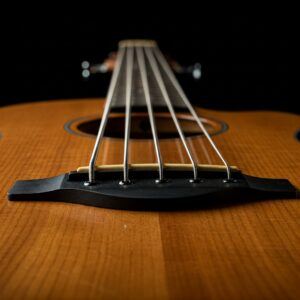
Playing Techniques for the 5 String Acoustic Electric Bass Guitar
Adapting to the Fifth String
Transitioning from a 4-string to a 5 string acoustic electric bass guitar requires some adjustment in technique and approach. Here are key considerations:
✅ Hand Position: The wider neck necessitates proper left-hand technique with thumb positioned centrally on the back of the neck
✅ Muting Techniques: The additional string increases the importance of proper muting to avoid unwanted string noise
✅ Right-Hand Adaptation: Fingerstyle players may need to adjust their right-hand position to accommodate the extra string
✅ Mental Mapping: Becoming familiar with the expanded note locations across the fingerboard takes practice
Many players find that starting with exercises focused specifically on incorporating the B string helps develop comfort with the expanded range. Practice routines that gradually integrate the fifth string into scales, arpeggios, and basslines can accelerate the adaptation process.
For those new to the acoustic electric bass 5 string format, focusing initially on simple root-fifth patterns across all strings helps build fingerboard familiarity. Gradually introducing more complex patterns that specifically utilize the extended lower range helps develop proficiency with the instrument’s full capabilities.
Fingerstyle Techniques for Acoustic-Electric Basses
While many electric bass guitar 5 string playing techniques transfer to acoustic-electric instruments, some adjustments are beneficial:
✅ Touch Sensitivity: Acoustic-electric basses often respond differently to fingerstyle techniques, requiring adjusted attack
✅ Dynamic Control: The natural resonance of acoustic bodies rewards players who develop nuanced dynamic control
✅ Thumb Position: Some players incorporate thumb plucking for the lower strings, similar to upright bass technique
✅ Palm Muting: Controlled palm muting can help shape the tone, especially when amplified
Developing a lighter touch often yields better results on acoustic electric bass 5 string models compared to their purely electric counterparts. The natural acoustics of these instruments can provide subtle tonal variations that might be obscured by overly aggressive playing techniques.
Experimenting with right-hand positioning – playing closer to the bridge for a more articulate sound or nearer the neck for warmer tones – can dramatically expand your tonal palette. This technique becomes even more effective when combined with the onboard EQ controls available on most 5 string acoustic electric bass guitar models.
Amplification Strategies
Getting the best amplified sound from your acoustic electric bass 5 string requires understanding how these instruments interact with amplification systems:
✅ Feedback Management: Position yourself appropriately relative to speakers to minimize feedback issues
✅ EQ Settings: Start with flat EQ and make subtle adjustments rather than dramatic cuts or boosts
✅ Compression: Light compression can help manage the dynamic range, especially for the B string
✅ DI vs. Amplifier: Consider using both direct (DI) and amplified signals for the fullest tone in larger venues
Many professional bassists who play the 5 string acoustic electric bass guitar in live settings prefer sending a direct signal to the front-of-house system while simultaneously using a smaller bass amp as a personal monitor. This approach provides better control over your sound while ensuring the audience hears a clean, full representation of your instrument.
The onboard preamps in most acoustic electric bass 5 string models offer significant tone-shaping capabilities. Taking time to understand the specific functions of your preamp – particularly features like notch filters, phase switches, and parametric mids – can help you quickly dial in appropriate sounds for different performance environments.
Maintenance and Care for Your 5 String Acoustic Electric Bass Guitar
Climate Considerations
The partially acoustic nature of a 5 string acoustic electric bass guitar makes it more susceptible to environmental factors than solid-body electric instruments:
✅ Humidity Control: Maintain relative humidity between 45-55% to prevent wood cracking or warping
✅ Temperature Stability: Avoid exposing the instrument to dramatic temperature changes
✅ Storage Solutions: Use a quality hardshell case with humidification system when not playing
✅ Travel Preparation: Allow the instrument to acclimate to new environments before playing
The expanded size and string tension of acoustic electric bass 5 string models make proper humidity control particularly important. The additional stress placed on the neck and body by the fifth string can exacerbate problems caused by improper humidity levels.
Many professional players invest in digital hygrometers to monitor storage conditions and specialized humidification systems designed for instrument cases. For those living in particularly dry or humid environments, in-case humidifiers or dehumidifiers can help maintain optimal conditions.
String Maintenance and Replacement
Proper string care significantly impacts the sound and playability of your 5 string acoustic electric bass guitar:
✅ Regular Cleaning: Wipe strings with a clean cloth after each playing session
✅ String Rotation: Consider replacing strings individually as they wear rather than complete sets
✅ Balanced Tension Sets: Choose string sets specifically designed for acoustic-electric 5-string basses
✅ Installation Technique: Proper string installation prevents tuning instability and premature wear
The B string on a 5 string acoustic electric bass guitar requires special attention. Its larger gauge and lower tension can result in more pronounced wear patterns and intonation challenges. Some players find that replacing the B string more frequently than the others helps maintain consistent tone and playability.
When selecting replacement strings, consider how different materials and constructions affect both the acoustic and amplified tones of your instrument. Phosphor bronze strings typically provide warmer acoustic tones with rich harmonics, while nickel-plated strings might offer more definition and punch when amplified.
Electronics Maintenance
The electronic components in your acoustic electric bass 5 string require regular attention:
✅ Battery Management: Remove batteries during extended storage periods
✅ Connection Cleaning: Periodically clean input jacks and controls with appropriate contact cleaner
✅ Professional Checkups: Have the electronics inspected annually by a qualified technician
✅ Pickup Height: Adjust pickup height according to manufacturer specifications for optimal signal
Many players of the 5 string acoustic electric bass guitar keep spare batteries and a small screwdriver in their case for emergency battery replacement during performances. This simple preparation can prevent frustrating situations where battery failure interrupts a performance.
For instruments with multiple pickup systems, understanding how to balance the different elements is crucial for achieving optimal tone. Experiment with different blend settings between piezoelectric and magnetic pickups to discover unique tonal possibilities that might suit particular musical contexts.

Buying Guide: How to Select Your Ideal 5 String Acoustic Electric Bass Guitar
Assessing Your Needs and Goals
Before investing in a 5 string acoustic electric bass guitar, consider these factors:
✅ Musical Styles: Different models excel at various genres – jazz, folk, rock, etc.
✅ Playing Environment: Consider where you’ll primarily use the instrument – studio, stage, home
✅ Physical Comfort: Body size, weight, and neck dimensions significantly impact playability
✅ Budget Constraints: Determine your price range while accounting for necessary accessories
Understanding your specific requirements helps narrow down the vast array of acoustic electric bass 5 string options available. A bass primarily used for intimate acoustic performances might prioritize different features than one intended mainly for amplified stage use.
Consider how the instrument will integrate with your existing equipment. Some 5 string acoustic electric bass guitar models work better with standard bass amplifiers, while others might benefit from acoustic-specific amplification systems that better reproduce their natural tonal characteristics.
Critical Hands-On Evaluation Points
When testing a potential 5 string acoustic electric bass guitar purchase, focus on these aspects:
✅ Neck Feel: Is the neck comfortable in all positions, particularly when playing the B string?
✅ String Balance: Do all five strings provide consistent volume and tone?
✅ Unplugged Sound: Does the bass produce sufficient acoustic volume and pleasing tone?
✅ Amplified Tone: When plugged in, does the bass maintain its acoustic character while providing necessary volume?
✅ Electronics Operation: Are the controls intuitive and effective in shaping the tone?
Pay particular attention to the transition between the E and B strings. On poorly designed or set-up instruments, this transition can feel awkward or the B string might lack definition compared to the other strings. A quality electric bass guitar 5 string with acoustic properties should provide a seamless playing experience across all strings.
Listen carefully for wolf tones – frequencies that resonate excessively due to body resonances. These can be particularly problematic in acoustic-electric instruments and might not be immediately apparent during brief testing sessions. Playing chromatic patterns slowly across all strings can help identify potential issues.
Essential Accessories
A complete 5 string acoustic electric bass guitar setup typically includes:
✅ Hardshell Case: Provides protection against physical damage and environmental changes
✅ Humidification System: Helps maintain proper moisture levels during storage
✅ Strap System: Secures the instrument during standing play (consider dual-attachment systems for better balance)
✅ Appropriate Amplification: Consider acoustic-specific preamps or amplifiers for optimal sound reproduction
✅ Specialized Strings: Keep spare sets designed specifically for acoustic-electric 5-string basses
For the acoustic electric bass 5 string player who performs regularly, a quality DI (Direct Injection) box can significantly improve your amplified sound. Look for models with ground lift switches, input padding, and filtering options designed specifically for acoustic instruments.
Consider investing in a specialized setup for your instrument. The additional string tension and neck width of a 5 string acoustic electric bass guitar often require expert adjustment for optimal playability and tone. A professional setup typically addresses action height, intonation, truss rod adjustment, and electronics optimization.
Amplification and Accessories for 5 String Acoustic Electric Bass Guitar
Amplifier Selection Considerations
Choosing the right amplification for your 5 string acoustic electric bass guitar requires understanding the unique characteristics of these instruments:
✅ Frequency Response: Look for systems with extended low-frequency reproduction to accommodate the B string
✅ Acoustic Properties: Amplifiers designed for acoustic instruments often better preserve natural tone
✅ Power Requirements: Ensure sufficient headroom to reproduce acoustic dynamics without distortion
✅ Portability: Consider the practical aspects of transporting your amplification system
Many professional players of the acoustic electric bass 5 string prefer acoustic-specific amplification systems from manufacturers like AER, Fishman, or Acoustic Image. These specialized amplifiers typically feature flatter frequency responses and cleaner power delivery that better complement the natural characteristics of acoustic-electric instruments.
According to research published in the Journal of the Audio Engineering Society, amplifiers specifically designed for acoustic instruments typically employ different circuit topologies than those intended for electric instruments, with a focus on preserving transient response and minimizing coloration of the original signal.
Effects and Signal Processing
While acoustic electric bass 5 string instruments can benefit from effects processing, a different approach than electric basses is often necessary:
✅ Subtle Compression: Light compression helps manage dynamic range without sacrificing acoustic character
✅ Reverb Application: Judicious use of reverb can enhance the natural acoustic properties
✅ EQ Strategies: Parametric EQ allows precise tonal control while maintaining natural sound
✅ Feedback Suppression: Notch filters and phase control help manage feedback issues in live settings
Many players find that a minimalist approach to effects processing yields the best results with 5 string acoustic electric bass guitar models. The natural acoustic properties of these instruments often benefit from enhancement rather than dramatic alteration.
Digital modeling systems designed specifically for acoustic instruments can provide versatile signal processing options without requiring multiple individual effects units. These integrated systems often include presets developed specifically for acoustic bass guitars that provide excellent starting points for further customization.
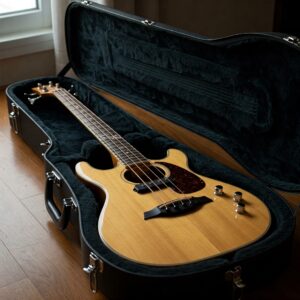
Recording Your 5 String Acoustic Electric Bass Guitar
Capturing the full essence of your electric bass guitar 5 string with acoustic properties in recording situations requires thoughtful microphone and direct signal blending:
✅ Microphone Placement: Consider using both near-field and room microphones to capture the full acoustic character
✅ Direct Signal: The onboard preamp provides a clean, direct signal that pairs well with microphone techniques
✅ Combined Approach: Blending direct and microphone signals offers the most complete tonal representation
✅ Post-Processing: Minimal processing often yields the most natural results in recording scenarios
When recording acoustic electric bass 5 string instruments, many engineers recommend a multi-microphone approach: a small-diaphragm condenser microphone aimed at the 12th fret captures articulation and string detail, while a large-diaphragm microphone positioned further away captures the body resonance and room ambience.
According to a survey of recording engineers by Sound on Sound magazine, 78% of professionals prefer combining direct and microphone signals when recording acoustic-electric bass guitars, with careful phase alignment between the different sources proving crucial for achieving cohesive results.
Beyond Basics: Advanced Concepts for 5 String Acoustic Electric Bass Guitar
Alternative Tunings and Extended Techniques
Exploring alternative tunings can expand the creative possibilities of your 5 string acoustic electric bass guitar:
✅ Drop-A Tuning (A-E-A-D-G): Provides even lower range for metal and progressive styles
✅ Tenor Tuning (C-G-D-A-E): Facilitates chord voicings and melodic playing in higher registers
✅ Open Tunings: Enable unique chord voicings and drone techniques
✅ Extended Techniques: Harmonics, tapping, and percussive approaches can be particularly effective on acoustic-electric instruments
The unique construction of acoustic electric bass 5 string models often responds differently to these alternative approaches than purely electric instruments. The natural acoustic resonance can enhance harmonics and percussive techniques, while open tunings often produce richer chord voicings due to sympathetic string vibrations within the acoustic body.
When exploring alternative tunings, remember that they place different tension patterns on the neck and body of your instrument. Monitor the instrument closely for any signs of excessive relief or bow in the neck, and consider consulting with a professional luthier for guidance on appropriate string gauges for non-standard tunings.
Integration with Other Instruments
The 5 string acoustic electric bass guitar occupies a unique sonic space that can enhance various ensemble configurations:
✅ Acoustic Groups: Provides foundational low end without overpowering other acoustic instruments
✅ Hybrid Bands: Bridges the gap between acoustic and electric elements within mixed ensembles
✅ Solo Performance: Offers sufficient range and harmonic capabilities for unaccompanied playing
✅ Recording Versatility: Can serve multiple functions within recording projects, from traditional bass roles to featured solo work
The extended range of the acoustic electric bass 5 string is particularly valuable in contexts where a single instrument needs to cover both traditional bass functions and lower register accompaniment patterns. This versatility makes these instruments ideal for smaller ensembles where maximizing the tonal range of each instrument is beneficial.
According to data from the International Musician’s Union, bassists who perform on acoustic-electric instruments report 27% more diverse gigging opportunities than those who play exclusively electric or acoustic instruments, highlighting the practical versatility these instruments provide.
Customization and Upgrades for Your 5 String Acoustic Electric Bass Guitar
Pickup and Preamp Enhancements
Upgrading the electronics in your 5 string acoustic electric bass guitar can dramatically improve its amplified performance:
✅ Pickup Upgrades: Advanced piezoelectric or hybrid pickup systems can provide more natural amplified tone
✅ Preamp Replacements: Aftermarket preamps often offer enhanced tone-shaping capabilities and lower noise floors
✅ Battery Options: Lithium-ion rechargeable systems provide longer life and more consistent performance
✅ Wireless Integration: Internal wireless systems eliminate cables while preserving tone
When considering electronic upgrades for your acoustic electric bass 5 string, consult with technicians who specialize in acoustic instruments rather than those who primarily work with solid-body electric instruments. The interaction between pickups and the acoustic properties of these instruments requires specialized knowledge for optimal results.
Many professional players find that upgrading to high-end preamp systems from manufacturers like L.R. Baggs, Fishman, or K&K provides substantial improvements in both tone quality and noise performance. These advanced systems often include sophisticated feedback suppression features that prove valuable in live performance situations.
Physical Modifications and Customizations
Physical alterations can enhance the playability and functionality of your 5 string acoustic electric bass guitar:
✅ Strap Systems: Enhanced strap attachment points improve balance and comfort during long performances
✅ Bridge Upgrades: Advanced bridge designs can improve intonation accuracy and string spacing
✅ Nut Replacement: Upgraded nut materials and proper slot cutting improves tuning stability and tone
✅ Control Layout: Repositioned or reconfigured controls can improve ergonomics for your specific playing style
Before undertaking any significant modifications to your electric bass guitar 5 string with acoustic capabilities, consult with a luthier experienced in working with these specialized instruments. The interactions between various components in acoustic-electric instruments are complex, and modifications that might benefit purely electric instruments could negatively impact the acoustic properties of hybrid designs.
Some players of the 5 string acoustic electric bass guitar find that custom-carved neck profiles significantly enhance playability, particularly for those with smaller hands or specific technique requirements. While such customizations represent significant investments, they can transform a good instrument into one that feels truly personalized to your playing style.
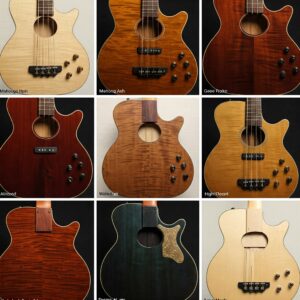
Expert Tips: Getting the Most from Your 5 String Acoustic Electric Bass Guitar
Practice Routines and Skill Development
Developing proficiency on the acoustic electric bass 5 string requires focused practice strategies:
✅ String Transition Exercises: Develop fluency moving between adjacent strings, particularly E to B
✅ Range Exploration: Create exercises that utilize the full range of the instrument
✅ Dynamics Practice: Work on controlling volume and attack consistently across all strings
✅ Genre-Specific Techniques: Develop skills relevant to your preferred musical styles
Many professionals recommend dedicated practice time focusing exclusively on the B string to develop proper technique and tonal control. Simple scale patterns and arpeggios that incorporate the B string into existing patterns help build muscle memory and fingerboard familiarity.
According to educational research from Berklee College of Music, bassists who establish systematic practice routines specifically designed for 5-string instruments typically achieve proficiency 40% faster than those who approach the instrument without structured learning methods.
Performance Strategies
Maximizing your effectiveness with the 5 string acoustic electric bass guitar in performance situations requires thoughtful preparation:
✅ Position Monitoring: Learn to position yourself relative to monitors and main speakers to minimize feedback
✅ Preset Development: Create and save presets for different performance environments and musical contexts
✅ Signal Path Management: Understand your complete signal chain from instrument to front-of-house
✅ Contingency Plans: Prepare backup strategies for equipment failures or unexpected acoustic challenges
Many experienced players of the acoustic electric bass 5 string develop relationships with sound engineers to better understand venue-specific challenges. Arriving early for soundchecks provides valuable opportunities to address potential issues before performances.
The extended range of the 5 string acoustic electric bass guitar can sometimes create mixing challenges in live situations. Working collaboratively with sound engineers to establish appropriate EQ and compression settings helps ensure your instrument sits properly in the mix without either disappearing or overwhelming other elements.
Gigging and Professional Applications
The versatility of the 5 string acoustic electric bass guitar creates diverse professional opportunities:
✅ Acoustic Ensembles: Perfect for unplugged performance contexts where traditional upright bass might be impractical
✅ Worship Teams: Increasingly popular in contemporary worship settings for their versatility
✅ Session Work: Provides unique tonal options for recording projects across multiple genres
✅ Solo Performance: Offers sufficient range for unaccompanied playing in intimate venues
Many professional bassists keep both electric bass guitar 5 string and acoustic electric bass 5 string instruments in their arsenal to accommodate various performance requirements. The ability to switch between these options has become increasingly valuable in the diverse musical landscape of 2025.
According to industry surveys by Bass Musician Magazine, approximately 65% of professional bassists now include at least one acoustic-electric instrument in their regular performance rotation, with 5-string variants showing the fastest growth in this category.
Crafting Your Sound: Tone Development Strategies
EQ and Processing Approaches
Developing your signature tone on a 5 string acoustic electric bass guitar involves understanding key processing concepts:
✅ Frequency Awareness: Learn which frequency ranges affect different aspects of your tone
✅ Minimal Processing: Start with subtle adjustments rather than dramatic EQ curves
✅ Context Sensitivity: Adapt your tone to complement other instruments in the ensemble
✅ B String Optimization: Pay special attention to EQ settings that keep the B string articulate without muddiness
Many professional players find that a slight midrange scoop (around 300-500Hz) helps acoustic electric bass 5 string instruments sit better in dense mixes while maintaining both low-end foundation and articulate high-end definition. This approach differs somewhat from typical electric bass EQ strategies, which might emphasize different frequency ranges.
Understanding how different wood combinations affect the natural resonances of your instrument helps inform more effective EQ decisions. Instruments with mahogany bodies typically benefit from different EQ approaches than those constructed with maple or other tonewoods due to their inherent frequency response characteristics.
Recording Your 5 String Acoustic Electric Bass Guitar
Capturing the full tonal spectrum of your acoustic electric bass 5 string in recording situations requires thoughtful techniques:
✅ Multiple Signal Paths: Consider blending direct and microphone signals for fullest representation
✅ Room Considerations: Record in spaces with appropriate acoustic properties for bass instruments
✅ Compression Strategies: Apply gentle compression to manage dynamic range without sacrificing expression
✅ Low-End Management: Use high-pass filters judiciously to maintain clarity without sacrificing fundamental tones
Many recording engineers recommend a dual-microphone approach when recording the 5 string acoustic electric bass guitar: a small-diaphragm condenser microphone aimed at the soundhole or 12th fret captures articulation and string detail, while a large-diaphragm microphone positioned further away captures body resonance and lower frequencies.
According to recommendations from Sound on Sound magazine, blending these microphone signals with the direct output from the instrument’s onboard preamp—with careful attention to phase relationships—often yields the most complete tonal representation.
Future Trends in 5 String Acoustic Electric Bass Guitar Technology
Emerging Innovations
The world of acoustic electric bass 5 string technology continues to evolve with exciting developments:
✅ Advanced Materials: Carbon fiber and composite materials offering improved stability with lighter weight
✅ Hybrid Pickup Systems: Increasingly sophisticated blend capabilities between multiple pickup types
✅ Modeling Technology: Digital modeling systems that simulate various acoustic environments and bass types
✅ Ergonomic Designs: Innovative body shapes that improve player comfort without sacrificing acoustic properties
Many manufacturers are exploring multi-scale (fan-fret) designs that provide optimized string tension across all five strings, addressing one of the persistent challenges with 5 string acoustic electric bass guitar instruments. These designs feature different scale lengths for each string, with longer scales for lower strings and shorter scales for higher strings.
According to predictions from Bass Gear Quarterly, the integration of advanced digital signal processing directly within instruments represents the next frontier for acoustic-electric bass development, potentially offering unprecedented tonal control and feedback suppression capabilities.
Sustainable Manufacturing
Environmental consciousness is increasingly influencing 5 string acoustic electric bass guitar production:
✅ Alternative Tonewoods: Research into sustainable alternatives to traditional tonewoods
✅ Production Methods: Reduced environmental impact manufacturing processes
✅ Instrument Longevity: Design approaches that extend instrument lifespan and serviceability
✅ Recycled Materials: Incorporation of recycled materials in non-critical components
Many forward-thinking manufacturers are exploring tonewood alternatives that provide similar acoustic properties to traditional materials while offering improved sustainability. Materials like reclaimed woods, bamboo composites, and responsibly harvested regional hardwoods are appearing in more electric bass guitar 5 string models with acoustic properties.
The Forest Stewardship Council certification for wood products has become an important consideration for environmentally conscious musicians selecting acoustic instruments. This trend has prompted many manufacturers to revise their sourcing practices and provide greater transparency regarding material origins.
🎸Don’t Miss Out on These Premium Bass Instruments!
➡ Take your bass playing to new heights with these carefully selected 5 string acoustic electric bass guitar models. Click on any highlighted instrument to check current pricing and availability. These instruments will help you achieve that perfect blend of acoustic warmth and electric power that today’s music demands!
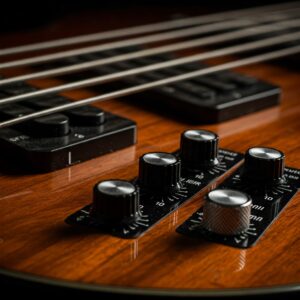
Conclusion
The 5 string acoustic electric bass guitar represents a remarkable fusion of traditional acoustic warmth and modern extended-range versatility. Whether you’re a professional musician seeking tonal expansion or an enthusiast exploring new sonic territories, these instruments offer unique capabilities that continue to evolve with technological advancements and innovative design approaches.
From understanding the fundamental construction features to mastering specialized playing techniques, developing proficiency with the acoustic electric bass 5 string opens creative possibilities across numerous musical contexts. The extended low-end range provides foundational support while maintaining the expressive acoustic qualities that complement both unplugged performances and amplified environments.
As you explore the world of 5 string acoustic electric bass guitar options, remember that finding the instrument that resonates with your personal playing style and musical goals is ultimately the most important consideration. Take time to experience various models, experiment with different techniques, and discover the unique voice that these versatile instruments can bring to your musical expression.
More FAQs
❓ What is the standard tuning for a 5 string acoustic electric bass guitar?
✅ The standard tuning is B-E-A-D-G, with the added B string providing extended lower range. This tuning gives players access to deeper notes commonly needed in contemporary styles while maintaining traditional four-string positions...
❓ How much does a quality 5 string acoustic electric bass guitar cost?
✅ Prices range from $399-$2,200 depending on construction quality and features. Entry-level models start around $399-$599, mid-range options run $600-$1,200, while professional-grade instruments typically cost $1,300-$2,200...
❓ Can I play a 5 string acoustic electric bass unplugged?
✅ Yes, these instruments produce sufficient acoustic volume for practice and small settings. The hollow or semi-hollow body designs create natural projection, though amplification is recommended for performance with other instruments...
❓ What's the difference between acoustic electric bass 5 string and electric bass guitar 5 string?
✅ Acoustic electric basses have hollow/semi-hollow bodies that produce natural acoustic sound plus amplified capabilities. They offer warmer, more organic tones compared to solid-body electric basses, with different playing dynamics and feedback characteristics...
❓ How do I prevent feedback when playing a 5 string acoustic electric bass guitar live?
✅ Use notch filters on your preamp to target problem frequencies, position yourself strategically relative to speakers, consider feedback suppression devices, and utilize proper EQ settings. Many modern preamps include phase switches that can help minimize feedback issues...
Recommended for You:
- 5 Top 5 String Acoustic Bass Options That Will Transform Your Sound in 2025
- 10 Best Bass Amp Options For Incredible Sound Quality in 2025
- The Ultimate Guide to Bass 5 Strings: Everything You Must Know to Master 2025
Disclaimer: This article contains affiliate links. If you purchase products through these links, we may earn a small commission at no additional cost to you.
✨ Found this helpful? Share it with your friends! 💬🤗

